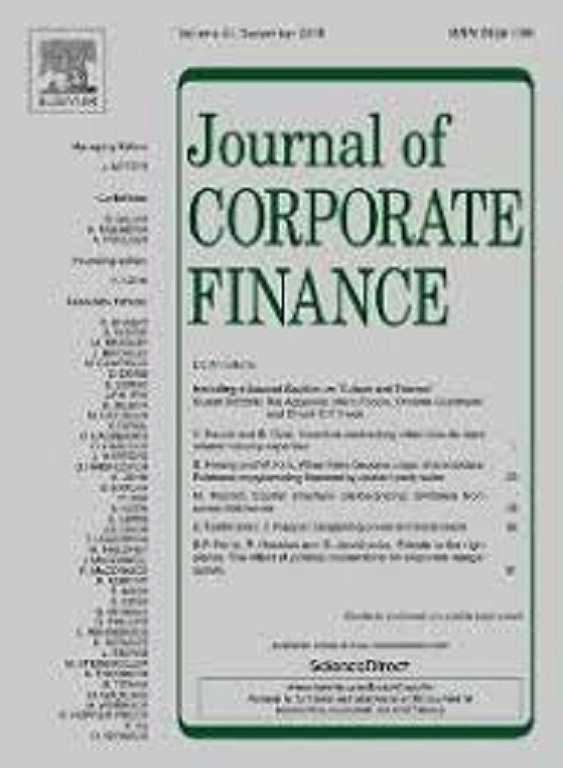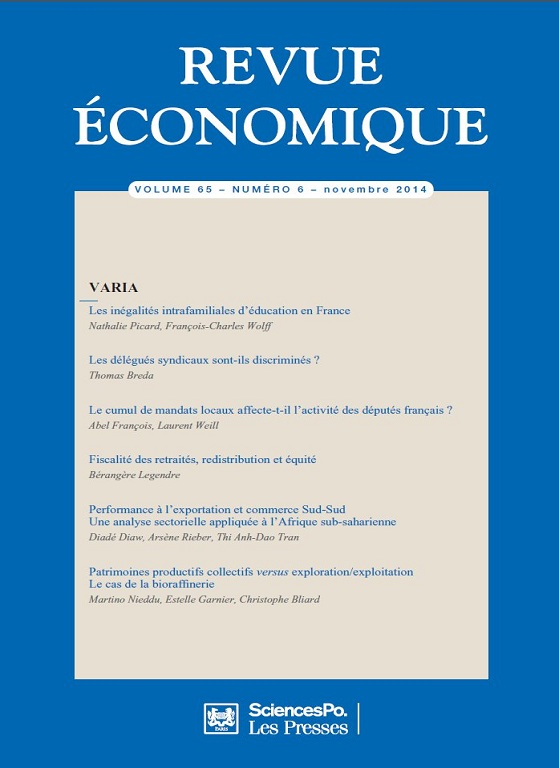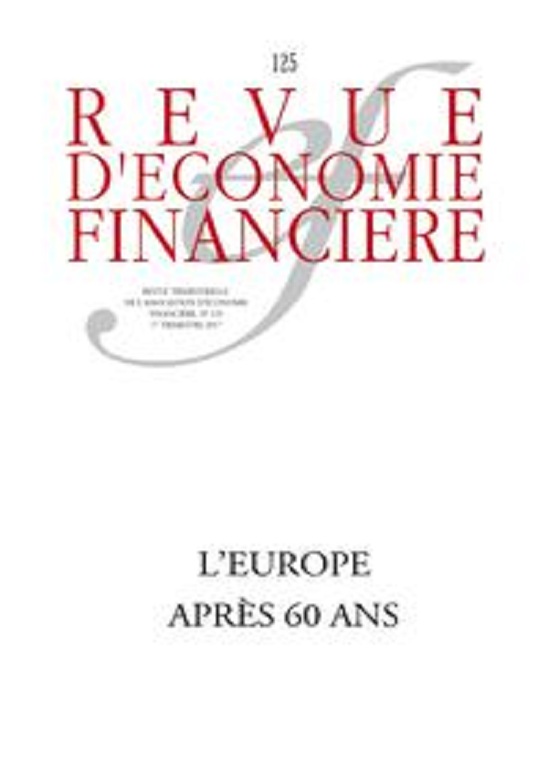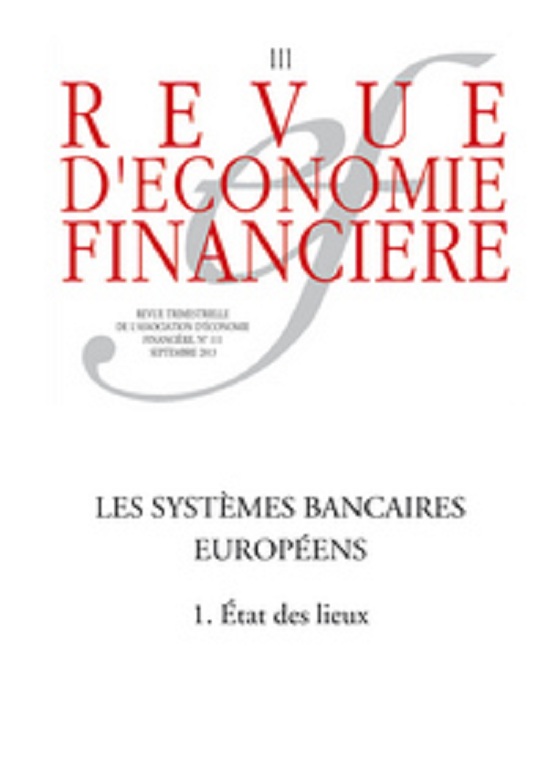Our portfolio includes completed projects and working projects. Completed projects refer to all accomplished drafts and publications in ranked journals. Working projects refer to finalized drafts that are currently under review in ranked journals.
Completed projects
Our team, Bankingmonitor.com, has accomplished and managed to publish the following projects in international ranked journals (e.g. Journal of Corporate Fiance, Journal of Business Ethics, Journal of Financial Stability, etc.). As per our privacy policy, we treat the coordinates of our customers as confidential. We only disclose the details of our own published projects. These research papers are mostly focused (but not limited to) on financial institutions, corporate finance, fintech, and economics and could be helpful to our potential customers in assessing our abilities.
Working projects
We are currently working on several research projects in finance and economics. Our work in progress includes multiple collaborators from the International Monetary Fund, the European Central Bank, the Islamic Development Bank, and various financial institutions. We also work with academics from universities and research centers located in the United States, the United Kingdom, Canada, and France. Below, we provide examples on our current working projects that could be helpful to our potential customers in assessing our research capacities.
Completed projects
Basel Compliance and financial stability: Evidence from Islamic banks
We find that compliance with the Basel Core Principles (BCPs) has a strong positive effect on the stability of conventional banks, and a positive but less pronounced effect on the stability of Islamic banks. We also find that the main impact of compliance is an increase in capital ratios, whereas other components of the Z-score are negatively affected. This reflects the desire of banks to be more closely integrated into the global financial system by holding higher capital ratios. The findings also justify the 2015 decision of the Islamic Financial Services Board to publish similar principles for Islamic banks.
Efficiency in Islamic vs. Conventional banking: The role of capital and liquidity
We show that higher capital and liquidity ratios increase the efficiency of conventional and Islamic banks. Using conditional quantile regressions, we further show that the effect is stronger for highly efficient, small, highly liquid, and highly capitalized conventional banks. We also find that more capitalized and liquid banks were efficient during the 2008/2009 financial crisis and the Arab Spring. Our findings support the view that the constraints imposed by Shari’a law may widen the efficiency gap between the two bank types, at the expense of Islamic banks. Furthermore, our findings suggest that the efficiency of conventional banks not only depends on bank capital and liquidity, but also on the level of bank efficiency while the relationship is inconclusive for Islamic banks. These findings provide insight into how capital and liquidity can shape bank efficiency. They suggest that higher capital and liquidity buffers serve a constraint on policymakers and may function very differently depending on the level of bank efficiency.
Culture and the capital-performance nexus in dual banking systems
While recent surveys have taken a special interest in culture to explain the failure of existing regulation, empirical evidence on the role of culture in influencing the bank capital-performance link is still largely unexplored. In this paper, we ask the following: Should regulators and policy makers make room for culture as an effective tool for a successful bank regulatory environment? We identify three proxies for cultural values derived from Hofstede (1980, 2001) and the World Values Survey and investigate to what extent individualism, masculinity, and trust can enhance or impede the capital-performance link for conventional and Islamic banks. Analyzing a panel of 729 banks operating in 33 countries from 1999 to 2013, our findings provide empirical evidence that cultural values enhance the capital-performance link for the two bank types. Our results have important policy implications: our paper represents a first initiative and provides evidence that culture has merits and can be used as an additional tool to implement regulatory guidelines in a successful way.
Creditor rights and bank capital decisions: Conventional vs. Islamic banking
Using a sample of banks operating in 24 countries, we provide robust evidence that stronger creditor rights are associated with higher capital adequacy ratios for conventional banks but not for Islamic banks. Such results suggest that, under stronger creditor protection, only the managers of conventional banks increase equity, presumably as a means of signalling better monitoring efforts and of avoiding loss of control. A possible reason for the finding that Islamic banks do not generally increase equity is that, under the profit loss sharing (PLS) principle, depositors share profits and losses with the bank. The role of creditor protection is hence irrelevant in an Islamic banking context. However, we show that in predominantly non-Muslim countries with less competitive markets, Islamic banks show a similar association between creditor rights and capital ratios as conventional banks.
The effect of capital ratios on the risk, efficiency and profitability of banks: Evidence from OECD countries
Using a sample of 1992 banks from 39 OECD countries during the 1999–2013 period, we examine whether the imposition of higher capital ratios is effective in reducing risk and improving the efficiency and profitability of banking institutions. We demonstrate that while risk- and non-risk based capital ratios improve bank efficiency and profitability, risk-based capital ratios fail to decrease bank risk. Our results cast doubts on the validity of the weighting methodologies used for calculating risk-based capital ratios and on the efficacy of regulatory monitoring. The ineffectiveness of risk-based capital ratios with regard to bank risk is likely to be exacerbated by the adoption of the new Basel III capital guidelines. While Basel III requires banks to hold higher liquidity ratios along with higher capital ratios, our findings suggest that imposing higher capital ratios may have a negative effect on the efficiency and profitability of highly liquid banks. Our results hold across different subsamples, alternative risk, efficiency, and profitability measures and a battery of estimation techniques.
The determinants of Islamic bank capital decisions
We report new evidence on the bank and institutional determinants of Islamic bank capital ratios in 28 countries between 1999 and 2013. Overall, we find that smaller, more profitable, and highly liquid Islamic banks are more highly capitalized. Additionally, improvements in the economic and financial environments and market discipline within a country correspond with higher Islamic bank capitalization. The results shed light on the impact that Sharia’a law restrictions have on Islamic banking capitalization. Our findings are most robust to banks that choose to hold capital well in excess of that required by regulators, consistent with traditional capital structure theory. Our results highlight the role that stable economic and political systems play in improving bank capitalization and reducing financial sector risk. By reducing political instability and corruption, improving legal systems, and encouraging access to capital markets, policymakers may incentivize managers to make financing decisions that increase the capitalization of the Islamic banking industry in developing countries.
Performance des banques islamiques vs banques conventionnelles : quelles exigences en matière de fonds propres réglementaires ?
This paper examines the effects of various types of bank regulatory capital on the profitability and the efficiency of conventional and Islamic banks. Using a sample of 656 banks from 1999 to 2013, we find that regulatory capital is positively associated with the efficiency and the profitability of the two bank types, although the results are stronger for conventional banks. The findings also suggest that Islamic Financial Services Board (IFSB) capital guidelines are more effective in improving the performance of Islamic banks than Basel Committee on Banking and Supervision (BCBS) capital guidelines.
Political systems and the financial soundness of Islamic banks
We investigate whether and how political systems affect the financial soundness of conventional and Islamic banks. Using factors extracted from principal component analysis, we find that Islamic banks underperform their conventional counterparts in more democratic political systems but outperform them in hybrid and Sharia’a-based legal systems. The findings reflect the challenges Islamic banks face in Western countries in terms of perception, financial infrastructure, and regulatory constraints while mirroring the recognition of their specificities and their cultural and religious compliance with Sharia’a law in Muslim countries. The findings are robust to a battery of alternative estimation techniques and methods of correcting standard errors.
The Performance of Islamic vs. conventional banks: Evidence on the suitability of the Basel capital ratios
This paper examines the effect of various types of bank capital on the profitability and efficiency of conventional and Islamic banks. Our results show that higher quality forms of capital improve the profitability and efficiency for both systems although the results are stronger for conventional banks. The capital effect is more pronounced for large, too-big-to-fail, and highly capitalized banks. The results are robust across various subsamples, alternative profitability and efficiency measures, and different estimation techniques.
Les banques islamiques sont-elles si islamiques que cela?
In theory, Islamic banks are profit-and-loss-sharing (PLS) institutions. Nevertheless, literature shows that, in practice, Islamic banks rely mainly on mark-up financing techniques compared to a marginal share of PLS instruments. In this paper, we demonstrate that the Islamic banks intermediation model is not very different from the conventional banks model. First, we report pure and hybrid models to reflect the activities practiced by Islamic banks. Second, we show that Islamic banks use PLS arrangement at their liability side but mark-up financing techniques at their assets side. Islamic banks financing modes are driven by Mourabaha contract that represent almost 80% of their activities. Finally, we employ a sample of 656 banks – including 116 Islamic ones – to examine the impact of their preferred intermediation model and find that Islamic banks have higher capitalization in the form of risk-based and non-risk-based capital ratios than conventional counterparts.
What makes Islamic banks different? A multivariate approach
Using data from 8615 banks (including 123 Islamic banks) in 124 developed and developing countries for the period between 2006 and 2012, we examine the financial characteristics that distinguish between conventional and Islamic banks. As banks’ financial characteristics are multi-faceted concepts, our indicators are constructed using principal component analysis. We find that Islamic banks are more capitalized, more liquid and more profitable, but have more volatile earnings compared to US and European banks. However, similarities in terms of liquidity and earnings volatility are more noticeable when the sample is limited to banks operating in countries where both systems coexist. Finally, we find that higher capital makes the returns of Islamic banks more volatile, while higher liquidity decreases the profitability of conventional banks.
Corporate social responsibility and investment efficiency
Using a sample of 21,030 US firm-year observations that represents more than 3000 individual firms over the 1998–2012 period, we investigate the relationship between Corporate Social Responsibility (CSR) and investment efficiency. We provide strong and robust evidence that high CSR involvement decreases investment inefficiency and consequently increases investment efficiency. This result is consistent with our expectations that high CSR firms enjoy low information asymmetry and high stakeholder solidarity (stakeholder theory). Moreover, our findings suggest that CSR components that are directly related to firms’ primary stakeholders (e.g. employee relations, product characteristics, environment, and diversity) are more relevant in reducing investment inefficiency compared with those related to secondary stakeholders (e.g. human rights and community involvement). Finally, additional results show that the effect of CSR on investment efficiency is more pronounced during the subprime crisis. Taken together, our results highlight the important role that CSR plays in shaping firms’ investment behaviour and efficiency.
Bank risk and performance in the MENA region: The importance of capital requirements
This paper benefits from various risk- and non-risk-based regulatory capital ratios and examines their impact on bank risk and performance in the Middle East and North Africa (MENA) region. Our findings suggest that compliance with the Basel capital requirements enhances bank protection against risk, and improves efficiency and profitability. The impact of capital requirements on bank performance is more pronounced for too-big-to-fail banks, banks in periods of crisis and banks in countries with good governance. The results are also robust when controlling for the Arab Spring transition period. Finally, endogeneity checks, alternative risk and performance measures, a principal component analysis and other estimation techniques confirm our findings.
Les banques islamiques sont-elles si islamiques que cela?
In theory, Islamic banks are profit-and-loss-sharing (PLS) institutions. Nevertheless, literature shows that, in practice, Islamic banks rely mainly on mark-up financing techniques compared to a marginal share of PLS instruments. In this paper, we demonstrate that the Islamic banks intermediation model is not very different from the conventional banks model. First, we report pure and hybrid models to reflect the activities practiced by Islamic banks. Second, we show that Islamic banks use PLS arrangement at their liability side but mark-up financing techniques at their assets side. Islamic banks financing modes are driven by Mourabaha contract that represent almost 80% of their activities. Finally, we employ a sample of 656 banks – including 116 Islamic ones – to examine the impact of their preferred intermediation model and find that Islamic banks have higher capitalization in the form of risk-based and non-risk-based capital ratios than conventional counterparts.
Working projects
Basel Compliance and financial stability: Evidence from Islamic banks
This paper provides robust evidence that compliance with the Basel Core Principles (BCPs) has a strong positive effect on the stability of conventional banks (as measured by their Z-scores), and a positive but less pronounced effect on the Z-scores of Islamic banks. Using a sample of banks operating in 19 countries, we find that the predominant result of compliance was an increase in capital ratios, whereas other components of the Z-score were negatively affected. This reflects the strong desire of banks to be recognized and to be more closely integrated into the global financial system by holding higher capital ratios. The results further indicate that six of the seven individual chapters of the BCPs have a positive effect on the stability of conventional banks, while only three of the chapters have a positive effect on the stability of Islamic banks. The findings support the effective role of BCP standards in improving bank stability and justify the 2015 decision of the Islamic Financial Services Board (IFSB) to publish new recommendations, known as the Core Principles for Islamic Finance Regulation (CPIFR), which are modelled on BCP standards but are specifically tailored to Islamic banks. Our findings suggest that the implementation of the CPFIRs should also positively affect the stability of Islamic banks.
Efficiency in Islamic banking: The role of capital and liquidity
This paper shows that higher capital and liquidity ratios increase the efficiency of conventional and Islamic banks. Using conditional quantile regressions, we further show that the effect is stronger for highly efficient, small, highly liquid, and highly capitalized conventional banks. We also find that more capitalized and liquid banks were more efficient during the 2008/2009 financial crisis and the Arab spring distress period. The findings of this study support the view that the tendency of Islamic banks to hold significant buffers of capital and liquidity, which results from both their business model and the constraints imposed by Sharia’a law, may widen the efficiency gap relative to their conventional peers. Furthermore, our findings suggest that the efficiency of conventional banks not only depends on bank capital and liquidity, but also on the extant level of bank efficiency while the relationship is inconclusive for Islamic banks. A first-difference estimation, an instrumental variable approach, and other estimation techniques confirm our results.
A note on regulatory responses to COVID-19 pandemic: Balancing banks’ solvency and contribution to recovery
We see spikes in unemployment rates and turbulence in the securities markets during the COVID-19 pandemic. Governments are responding with aggressive monetary expansions and large-scale economic relief plans. We discuss the implications on banks and the economy of prudential regulatory intervention to soften the treatment of non-performing loans and ease bank capital buffers. We apply these easing measures on a sample of Globally Systemically Important Banks (G-SIBs) and show that these banks can play a constructive role in sustaining economic growth during the COVID-19 pandemic. However, softening the treatment of non-performing loans along with easing capital buffers should not undermine banks’ solvency in the recovery period. Banks should maintain usable buffer in the medium-term horizon to absorb future losses, as the effect of COVID-19 on the economy might take time to fully materialise.















